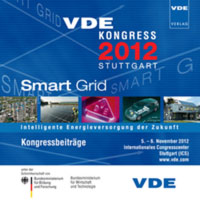Integrating fleets of EVs into rural low-voltage grids with a high share of photovoltaic energy
Conference: VDE-Kongress 2012 - Intelligente Energieversorgung der Zukunft
11/05/2012 - 11/06/2012 at Stuttgart, Deutschland
Proceedings: VDE-Kongress 2012
Pages: 6Language: englishTyp: PDF
Personal VDE Members are entitled to a 10% discount on this title
Authors:
Hoerstebrock, T.; Schütte, S. (OFFIS – Institute for Information Technology, Oldenburg, Germany)
Buchmann, M. (BEI – Bremer Energie Institut, Bremen, Germany)
Abstract:
Various projects have already focused on the integration of electric vehicles (EV) into the electricity grid in urban areas, including the effect of different charging strategies like Vehicle-to-Grid. In this paper, we explain our approach to investigate similar scenarios for commercially used EVs in rural areas. The low-voltage power grid in these areas is often designed for lower loads, making it important to evaluate the effect of EVs in such a system. Additionally, the diffusion of large-scale photovoltaic (PV) systems in these areas is accelerating. This development leads to an even higher load and to a higher risk of congestion or voltage band violations in the low-voltage grid. EVs may be able to exploit this surplus of electricity and stabilize the power grid. However, single (privately used) EVs would not be sufficient. Thus, we investigate the potential of EV fleets to upkeep a stable low-voltage grid. Our approach uses co-simulation to simulate the dependencies between the grid and EV fleet activities. A geographic information system (GIS) serves as the database to provide consumption/supply curves for the simulation of private households and PV-systems. The mobility simulation component is based on real field tests in which fleet owners temporarily use electric vehicles. Based on the co-simulation, we will develop recommendations of pricing models to create incentives for grid-friendly EV operation and roadmaps to expand PV and/or locally upgrade power grids. Additionally, we will identify reference setups under which fleet owners can switch to electric vehicles.


